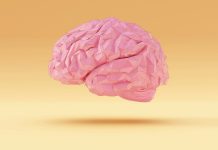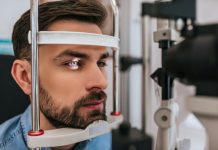
Researchers from the University of Tsukuba in Japan have published groundbreaking findings that could pave the way for early diagnosis and differentiation of neurodegenerative diseases such as Alzheimer’s and dementia with Lewy bodies.
The study, published in Dementia and Geriatric Cognitive Disorders, reveals subtle changes in the brain’s neural network that could serve as early biomarkers for these conditions.
“Mild cognitive impairment is an early warning sign of various neurodegenerative diseases like Alzheimer’s, dementia with Lewy bodies, and others.
Distinguishing between these conditions early on is crucial because the course of the disease and treatment options are different for each,” says senior author Professor Tetsuaki Arai.
A Novel Approach Using Conventional Equipment
The researchers used conventional magnetic resonance imaging (MRI) to study brain network abnormalities in people with mild cognitive impairment due to Alzheimer’s or Lewy bodies.
Unlike previous studies, which required specialized neuroimaging equipment, this study aims to make early diagnosis more accessible.
“We adopted a similarity-based approach that examines the correlation between cortical structures in different parts of the brain,” explains lead author Professor Miho Ota.
“Our findings were astonishing. We were able to identify distinct brain network abnormalities in Alzheimer’s and Lewy bodies patients, and importantly, these changes were evident before any noticeable changes in gray matter volume.”
Implications and Next Steps
This development implies that neural network imaging could be a more effective and accessible diagnostic tool than traditional methods, which focus on gray matter volume.
Given that MRI machines are widely available, this method could offer a practical way to detect and differentiate neurodegenerative diseases at an early stage, providing new avenues for early intervention and treatment.
“This study shows that it’s possible to identify subtle changes in neural networks using a similarity-based approach, offering a new way to differentiate between Alzheimer’s and dementia with Lewy bodies,” says Professor Arai.
“This could potentially revolutionize how we approach the diagnosis and treatment of these diseases.”
The researchers plan to further validate their findings and explore whether their imaging techniques can be applied to other forms of neurodegenerative diseases, thereby broadening the potential impact of their work.
If you care about dementia, please read studies about low choline intake linked to higher dementia risk, and how eating nuts can affect your cognitive ability.
For more information about brain health, please see recent studies that blueberry supplements may prevent cognitive decline, and results showing higher magnesium intake could help benefit brain health.
The study was published in Dementia and Geriatric Cognitive Disorders.
Follow us on Twitter for more articles about this topic.
Copyright © 2023 Knowridge Science Report. All rights reserved.dfgh



